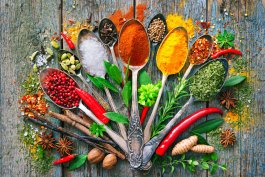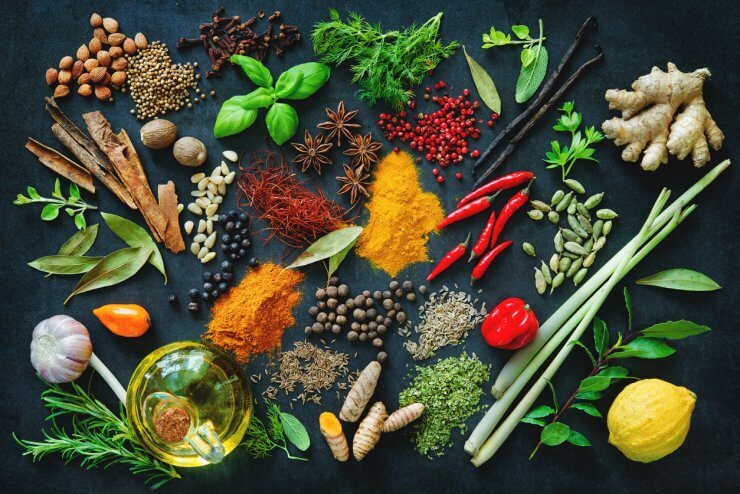
Let’s talk about spices and herbs. Or spices vs. herbs if you prefer, because there can be some serious debate around what’s what. Admittedly, it gets a bit confusing, especially since the two terms get used interchangeably so often. Then you get into things like curry or garam masala, which are not, in fact, spices. They are spice blends.
To take it a bit further, there’s also za’atar, which is a blend of both herbs and spices. But just to keep you on your toes, za’atar is also a type of oregano native to the Middle East. Oh! And we can’t forget coriander. The leaves of the coriander plant are an herb known as cilantro, while the seeds are the spice known as coriander.
Is your head spinning yet? It’s okay. It’s a lot to take in. Take a breath. And another. And let’s get into spices vs. herbs and find out what they are, which you can grow easily at home, and a little bit about harvesting and using them.

Spices vs. herbs: What’s the difference?
A very simple way to approach this is to think about what part of the plant you use. Generally speaking, herbs are the leaves of a plant (or plants grown specifically for their leaves, such as basil or thyme). For the most part, herbs come from herbaceous (non-woody) plants. Rosemary and the bay leaf are a couple of notable exceptions here. Herbs are usually used either fresh or dried.
Spices, on the other hand, may be the seeds, bark, roots, fruit, or flower of a plant. For example, vanilla is the unripened fruit of an orchid, while cinnamon is the dried inner bark of several varieties of cinnamon trees. Spices are usually dried and crushed, but again, there are always exceptions, like ginger root.
So the basic spices vs. herbs breakdown is this: Herbs are the leaves of a plant. Spices come from the non-leaf part of a plant or tree.
Growing herbs and spices
You can find herbs growing in almost any part of the world. Rosemary is native to the Mediterranean region, basil comes from southeastern Asia (although there is some debate as to the herb’s origin), and white sage is native to the southwestern U.S. and northwest Mexico.
What this means for gardeners is that you can plant your favorite culinary herbs pretty much wherever you live. In fact, many herbs will even grow happily indoors, as long as they get plenty of sunshine (or grow light) and the right amount of water.
Spices are a bit tricker, and it can depend on what spice you want to grow. Coriander, that chameleon of herb and spice, will grow most anywhere you can grow herbs.
Other spices need warm conditions. For example, turmeric and ginger will grow in hardiness zones 8 or higher, but you can grow them indoors in containers in cooler climates. In both cases, the plants grow from rhizomes, making them relatively easy to grow and harvest. The caveat is that they need daytime temperatures of at least 68, and it can’t get any lower than 50 at night.
While some spices, like roots, are easy to harvest, spices made of seeds take a little more work. Cumin seeds are popular in a wide variety of international dishes, and the plant will grow in hardiness zones 5 to 10, where there is a long, hot growing season. In the cooler parts of those zones, you’ll need to start the seeds indoors about 4 to 8 weeks before the last spring frost.
Around 120 days after you’ve planted cumin, it will be ready to harvest. To do this, cut the stems near the ground, wrap the seed pods in a paper bag, and tie the stems together to hang upside down. Once the seed pods are completely dry, you can rub the pods and remove the seeds.
So, in reality, you don’t have to contend with spices vs. herbs. It turns out you can have both in your garden, as long as you live in the right place and have the patience to wait for your roots or work for your seeds.
Before we go, there is one last thing we should clear up regarding curry. Curry is indeed a spice blend and not a spice. That’s true. However, there’s also a curry tree with delicious leaves you can use to flavor soups, stews, and (sorry!) curry dishes. So since you use the leaves, does that make curry an herb?
Have you tried growing your own spices? Are there any you’d recommend for home gardens?


 Previous
Previous

